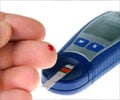The irritating pain in your legs after climbing the stairs could reveal more than just your age-it could indicate that you might be suffering from peripheral vascular disease (PVD)
The irritating pain in your legs after climbing the stairs could reveal more than just your age-it could indicate that you might be suffering from peripheral vascular disease (PVD) - a disease of the blood vessels outside of the heart and brain.
PVD occurs when fatty deposits known as plaque build up in the inner lining of artery walls, causing a narrowing of the vessels that carry blood to the legs.Symptoms of PVD include pain, numbness, aching or heaviness in the leg muscles when walking or climbing stairs. Symptoms may also include cramping in the legs, buttocks, thighs, calves and feet.
"Factors that can cause plaque buildup include smoking, high amounts of certain fats in the blood, high blood pressure and high amounts of sugar in the blood due to diabetes," said Thomas Livingston, M.D., radiologist on the medical staff at Baylor All Saints Medical Center at Fort Worth.
However, National Heart Lung and Blood Institute (NHLBI) revealed that almost fifty percent of PVD sufferers don't have any signs or symptoms of it.
NHLBI suggested that it is necessary to have an accurate diagnosis of PVD is because PVD elevates the risk for coronary artery disease, heart attack, stroke and transient ischemic attack ("mini-stroke") by six to seven times, than the risk for those who don't have PVD.
PVD is diagnosed based on a person's medical and family histories, a physical exam and test results.
Advertisement
Treatment for PVD includes lifestyle changes, such as quitting smoking, lowering blood pressure and getting regular exercise; medications; and surgery and procedures, including bypass grafting and angioplasty.
Advertisement
Source-ANI
SRM











